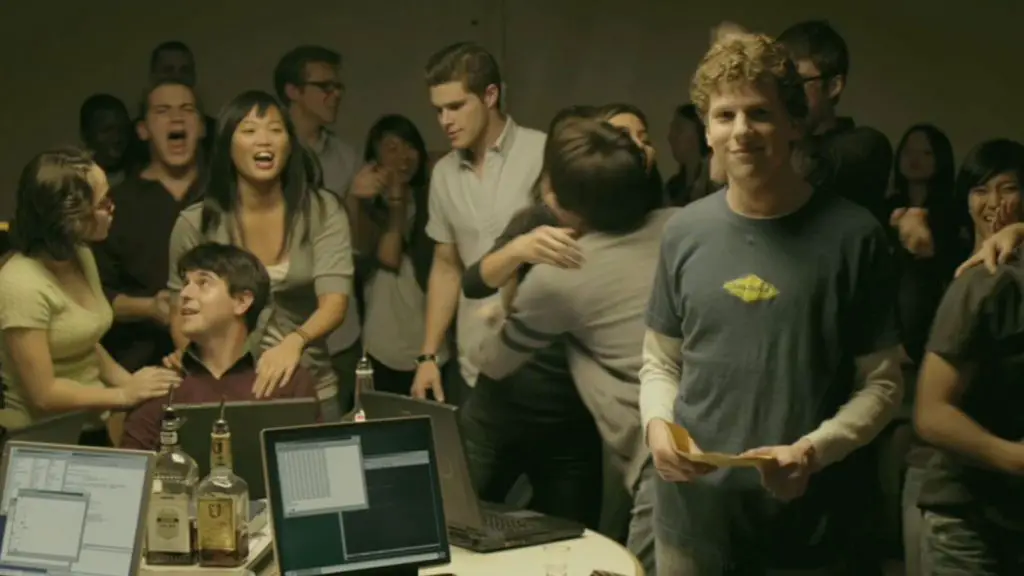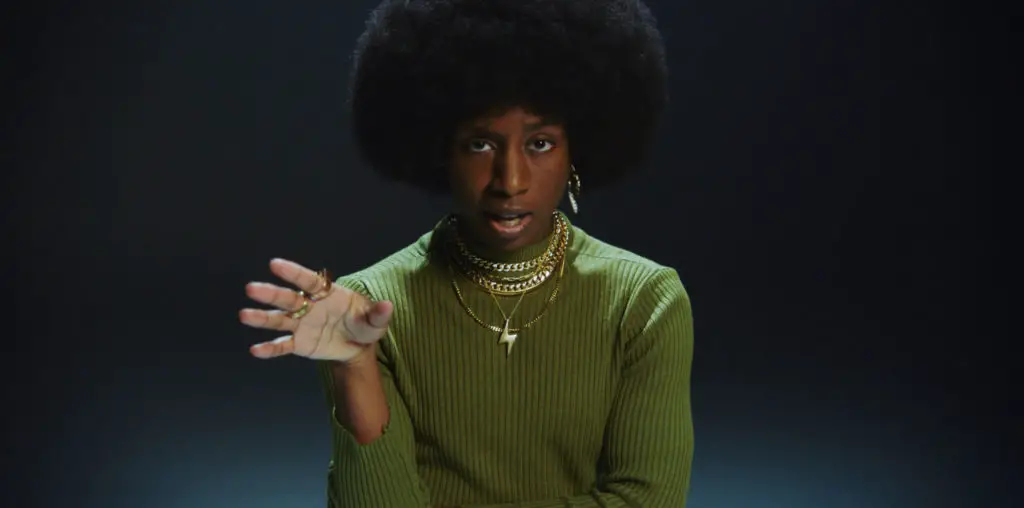
BOOTLEG FILES 170: “The Madhouse on Castle Street” (1963 British TV drama starring Bob Dylan).
LAST SEEN: In its one and only television broadcast on January 13, 1963.
AMERICAN HOME VIDEO: None.
REASON FOR DISAPPEARANCE: No prints of the film are known to exist.
CHANCES OF SEEING A DVD RELEASE: The answer is blowin’ in the wind!
This week’s offering is very different because we’re looking at film that doesn’t exist anymore. Or at least no known copy of the film has been located. In fact, the only reason it is being cited here is not because of its presence on bootleg videos, but because of its presence on bootleg audiotapes.
The film is “The Madhouse on Castle Street,” which was produced and broadcast by the BBC on January 13, 1963. No one would bother to remember this production today had it not been for a wild fluke in its casting: a hitherto unknown 21-year-old American folk singer named Bob Dylan, making his acting debut in a very unlikely setting.
Evan Jones wrote “The Madhouse on Castle Street” and it offered the tale of a reclusive young man who shuts himself in his boarding house room, with the declaration that he will never come out unless the world changes. In the course of the drama, the young man’s friends and fellow boarding house residents try to discover why he chose to take such a drastic and peculiar course of action. In many ways, the drama was typical of the so-called boarding house plays of British theater during the early 1960s: a motley collection of malcontent souls venting their respective fears and furies in the setting of a cheap, rundown rooms-to-let setting.
But how in the world could an American like Bob Dylan wind up in such a distinctly British production? It appears that director Philip Saville was in New York in late 1962 and saw Dylan in performance at a Greenwich Village club. At this time, Dylan was still some distance from becoming a music star. But Saville was intrigued with the young performer and impulsively offered to bring him to London and cast him in the lead of “The Madhouse on Castle Street.” The fact that Dylan never acted before didn’t seem to bother either Dylan or Saville, and in December 1962 Dylan found himself enjoying a free room at London’s swanky Mayfair Hotel – paid for by the BBC, at Saville’s insistence.
However, Dylan proved to be a lot more difficult than Saville anticipated. The Mayfair management requested that he be removed after other guests complained about Dylan’s habit of playing his guitar in the hotel lobby. Saville scrambled to get another hotel room for him, but while this was going on Dylan spend much of his free time exploring London’s music scene and connecting with the local folk performers. By the time Saville was able to get Dylan into the BBC studios to rehearse “The Madhouse on Castle Street,” Dylan abruptly balked and claimed he was unable to play the role. His reason: he couldn’t act.
Having spent a great deal of time, money and energy in bringing this thoroughly unknown and increasingly difficult personality to London, Saville conferred with Evan Jones and convinced the playwright to recraft “The Madhouse on Castle Street.” Dylan was no longer required to play the lead role of the recluse (that went to rising young dramatic star David Warner). Instead, Dylan was inserted into the proceedings in the new role as “Bobby the Hobo,” the boarding house’s resident musician. He was simply required to wander about, comment briefly on the proceedings, Greek chorus-style, and play a few songs at key points of the drama. In retrospect, this new character seemed disruptive and distracting to the overall production – but at the time, it was the only way to justify Dylan’s presence.
Initially, Dylan was going to perform a few classic English folk tunes in the production. Yet an unlikely bit of eavesdropping helped create broadcasting history. Saville, who had to briefly house Dylan after he was expelled from the Mayfair, told the British newspaper The Guardian about this magical music moment:
“I got up to have a pee and I heard music. I wandered along the landing and there at the bottom, because I had a little baby then, were our two Spanish au pairs. There he was at the top of the stairs, singing, and these two lovely little girls were like two little robins or starlings looking up at him. He didn’t know I was behind him, and I applauded and just said: ‘Oh Bob, would you sing that on the opening and closing of the production?’”
The song was “Blowin’ in the Wind” and, as far as anyone can determine, this was the first time “Blowin’ in the Wind” was heard by the public. The fact it had no connection whatsoever to Evan Jones’ play was immaterial, of course – it just sounded right.
“The Madhouse on Castle Street” took two days to film. When it was broadcast, it received desultory reviews and dismal ratings – it was pitted against the popular variety program “Sunday Night at the Palladium,” Britain’s answer to “The Ed Sullivan Show.” There is no record that the play was ever rebroadcast, nor does it appear that it was sold for broadcast in other countries.
So where is “The Madhouse on Castle Street”? Apparently, the print of the film laid around in the BBC archives until 1968, when someone at the network ordered it destroyed. Whether this was an intentional act of destruction or whether no one was genuinely aware of the print’s contents is unclear. During this period, it was not uncommon for the BBC to destroy prints and tapes of its older shows – unlike the U.S. television market, Great Britain did not have local stations that could rerun old shows ad infinitum, and the video business was a good 10 years into the future.
As far as anyone can determine, the only print of “The Madhouse on Castle Street” disappeared. Unless a duplicate print was made or someone at the BBC absconded with the print and kept it for a private collection, it has to be considered as a lost movie.
However, fragments of “The Madhouse on Castle Street” survive in audio bootlegs. In the pre-video era, people who use reel-to-reel tape recorders to tape their favorite TV shows. Remarkably, a few people in 1963 had the prescience to set up their tape recorders when “The Madhouse on Castle Street” was playing – no mean feat, since there was no inkling that a soon-to-be major music star was in the cast.
For many years, bootlegged audio recordings of Dylan performing “Blowin’ in the Wind” and the English folk tune “The Ballad of the Gliding Swan” in this broadcast have circulated among Dylan fanatics. (The latter tune is another example of Dylan’s cranky behavior in London – Evan Jones rewrote the lyrics to make mention of the contemporary controversy regarding the drug Thalidomide, but Dylan intentionally used the song’s traditional lyrics in the production.) Oddly, these two songs were all that were known to exist – no complete off-air recording of the production could be found.
In 2005, a documentary called “Dylan in the Madhouse” was in a production and a call went out for anyone who had additional audio recordings or even an elusive duped print. Remarkably, three more audio recordings surfaced: Dylan performing the old folk tunes “Hang Me, Oh Hang Me” and “The Cuckoo” plus an untitled instrumental piece created solely for the broadcast.
If you want to hear the surviving Dylan tunes, you have to go bootleg surfing. Due to music clearance issues, they’ve never been presented on commercial labels. “Dylan in the Madhouse” is also a bootleg-only title for American fans. The documentary was broadcast on the BBC in August 2005 and later played in a few European film festivals, but to date it has not been shown in the United States. However, bootleg copies can be found on at least one P2P site and on DVD through Dylan-obsessed collector-to-collector resources.
It is not certain what Dylan thought of “The Madhouse on Castle Street” or if he ever saw the finished film. Considering his erratic and often incomprehensible relation with film acting, perhaps the loss of “The Madhouse on Castle Street” isn’t that tragic. But then again, it would be fun to see what he was like at the very cusp of superstardom, introducing “Blowin’ in the Wind” to a completely unsuspecting world.
IMPORTANT NOTICE: The unauthorized duplication and distribution of copyright-protected material is not widely appreciated by the entertainment industry, and on occasion law enforcement personnel help boost their arrest quotas by collaring cheery cinephiles engaged in such activities. So if you are going to copy and sell bootleg videos, a word to the wise: don’t get caught. The purchase and ownership of bootleg videos, however, is perfectly legal and we think that’s just peachy! This column was brought to you by Phil Hall, a contributing editor at Film Threat and the man who knows where to get the good stuff…on video, that is.
Discuss The Bootleg Files in Back Talk>>>

